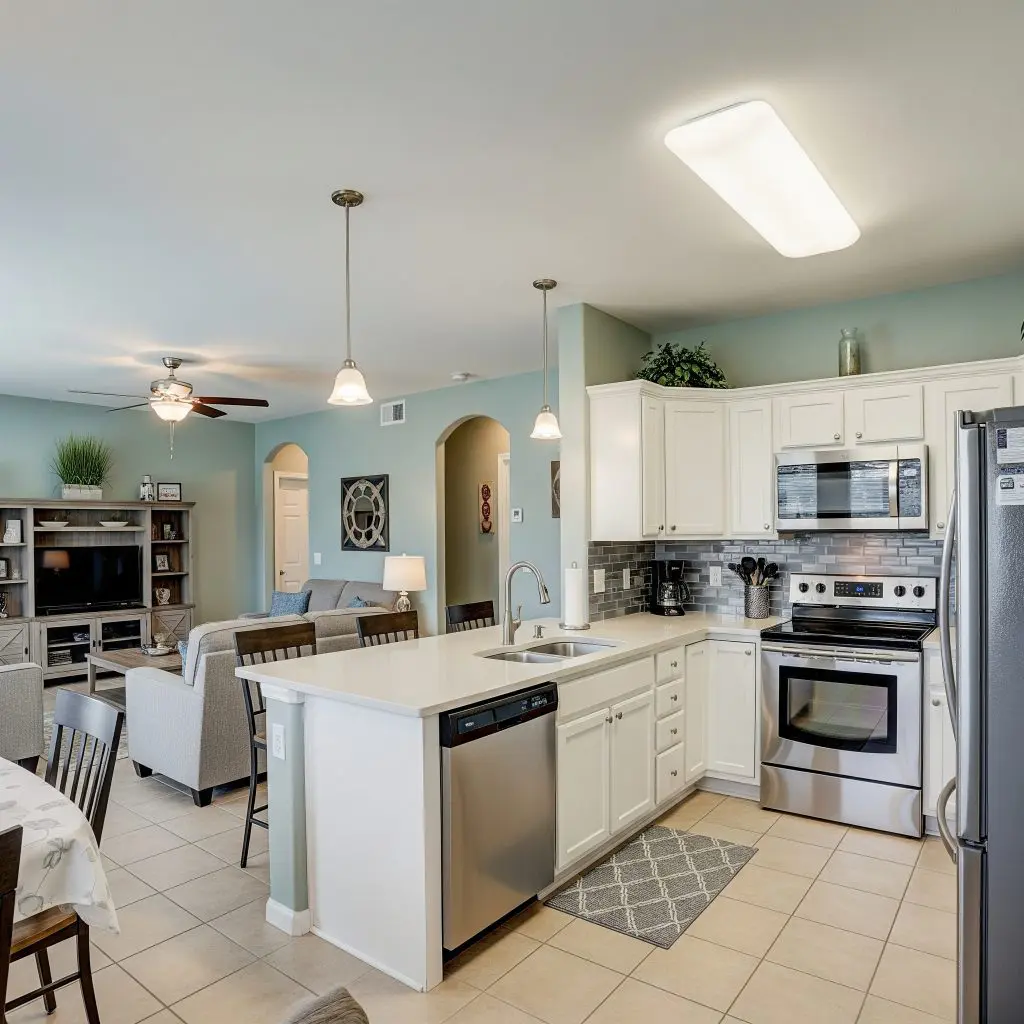Illinois Inflation Budgeting & Real Estate Investment Guide 2025
As inflationary pressures persist in the United States through 2025, investors and families alike are seeking robust budgeting strategies and resilient real estate opportunities. Illinois, with its diverse economic base, iconic metropolitan hubs, and shifting population trends, presents a unique landscape for inflation-hardened investing and financial planning. This comprehensive guide examines Illinois-specific indicators, market trends, and actionable real estate strategies to help you make informed decisions in a high-inflation environment.
- Illinois Inflation Budgeting & Real Estate Investment Guide 2025
- Illinois Economic Indicators & 2025 Inflation Trends
- Budgeting for Inflation in Illinois
- Illinois Real Estate Investment Opportunities in 2025
- State Economic Policies & Business Climate
- Illinois Population & Workforce Trends
- Cost of Living & Inflation Budgeting: Practical Examples
- Illinois-Specific Inflation Hedging Strategies via Real Estate
- Regulatory Environment & Investment Incentives
- 2025 Illinois Economic Forecast & Projections
- Illinois Real Estate Case Studies & Success Stories
- Conclusion: Building Resilience in Illinois Real Estate & Budgeting
Illinois Economic Indicators & 2025 Inflation Trends
- Inflation Rate (2024-2025): Projected CPI increase of 3.6% (midwest regional composite)
- Median Home Value (Q1 2025): $262,000 (statewide; source: Illinois REALTORS®)
- Unemployment Rate (March 2025): 4.7% (steady year-over-year)
- State GDP Growth (2024-2025 forecast): 1.9%
- Population Growth (2020-2024): Slight decline, but stabilization projected 2025 onward, fueled by suburban and exurban in-migration
Inflation is affecting Illinois in line with national averages, but distinct regional dynamics—especially the split between urban Chicago and the rest of the state—require nuanced financial strategies.

Budgeting for Inflation in Illinois
1. Cost of Living Adjustments
Illinois’ cost of living varies dramatically between the metropolis of Chicago and smaller cities like Peoria and Springfield. Key budgeting considerations across the state include:
Need capital? GHC Funding offers flexible funding solutions to support your business growth or real estate projects. Discover fast, reliable financing options today!
Test Your Expertise: The Complexities of the 1031 Exchange

As a sophisticated real estate investor, you understand that the 1031 Exchange is a cornerstone strategy for tax deferral and wealth accumulation. But beyond the basics, the intricacies of the 1031 Exchange rules can pose significant challenges. This quiz is designed to test your in-depth knowledge and highlight critical nuances that separate casual investors from true experts in 1031 Exchange transactions.
Instructions: Choose the best answer for each question.
⚡ Key Flexible Funding Options
GHC Funding everages financing types that prioritize asset value and cash flow over lengthy financial history checks:
-
Bridge Loans: These are short-term loans used to "bridge the gap" between an immediate need for capital and securing permanent financing (like a traditional loan or sale). They are known for fast closing and are often asset-collateralized, making them ideal for time-sensitive real estate acquisitions or value-add projects.
-
DSCR Loans (Debt Service Coverage Ratio): Primarily for real estate investors, these loans are underwritten based on the property's rental income vs. debt obligation ($\text{DSCR} = \text{Net Operating Income} / \text{Total Debt Service}$), not the borrower's personal income or tax returns. This offers flexibility for those with complex finances.
-
SBA Loans: The Small Business Administration (SBA) guarantees loans offered by partner lenders. While providing excellent terms (long repayment, lower rates), the application process is typically slower than private/bridge funding, often making them less suitable for immediate needs. SBA eligibility heavily relies on the DSCR metric for repayment assessment.
🌐 Learn More
For details on GHC Funding's specific products and to start an application, please visit their homepage:
The Ultimate DSCR Loan for Rental Property Quiz

Are you looking to expand your real estate investment portfolio? A DSCR loan might be the perfect tool to help you achieve your goals without relying on traditional income documentation. Test your knowledge with this quiz to see if you're ready to master the intricacies of a DSCR loan for rental property.
- Housing Costs: Rising fastest in the Chicagoland suburbs; relative affordability persists in downstate cities and select rural counties.
- Utilities: Illinois is a net energy importer; electric and gas rates have risen ~9% YoY. Consider fixed-rate utility contracts or energy-efficient renovations.
- Transportation: Public transit in urban areas offers a hedge against fuel inflation, but rural and suburban residents face higher costs.
- Groceries & Essentials: Prices up 5% YoY. Budget-conscious consumers turn to discount retailers and local food cooperatives.
2. Property Taxes & State Taxes
Illinois has among the highest property tax rates in the nation (average effective rate ~2.08%). Budgeting for these taxes is crucial, especially for real estate investors:
- Suburban counties (DuPage, Lake, Kane) have higher rates than rural counties (Edgar, Jasper).
- Tax incentives for historic rehabilitation and Opportunity Zones in cities like Rockford, Peoria, and parts of Chicago offset some costs.
Illinois Real Estate Investment Opportunities in 2025
Primary Emphasis: Commercial Real Estate
During high inflation, commercial properties provide a hedge as leases often include rent escalators tied to inflation indices. Illinois’ strategic location, diverse industry base, and trade corridors reinforce its attractiveness, especially for:
- Industrial/Logistics Hubs: The I-55 and I-80 corridors near Joliet, Bolingbrook, and Elwood are booming as national distribution pivots toward warehousing and e-commerce.
- Medical Office Buildings: Suburban Chicago (Oak Brook, Schaumburg, Naperville) is seeing steady demand due to the state’s robust healthcare sector.
- Class B & C Urban Office Space: Investors are repurposing older downtown Chicago offices into mixed-use/multifamily as remote work and hybrid models persist.
- Retail Strip Centers: Suburban expansion in Kane and Will counties has stabilized certain retail niches, especially those anchored by grocery and service tenants.
Local Market Analysis: Major Illinois Cities
Chicago Metropolitan Area
- Population: ~9.5 million (metro)
- Economic Drivers: Finance, tech, logistics, healthcare, corporate headquarters (33 Fortune 500 companies)
- Commercial Opportunities: Adaptive reuse in the Loop and West Loop; new demand for warehouse and distribution in O’Hare and Southwest suburbs; life sciences in Fulton Market and Hyde Park.
- Case Study: In 2024, the redevelopment of a vacant Sears in Hoffman Estates into a fulfillment center yielded a 16% annualized return for investors, outperforming residential market rates.
Springfield
- Population: 114,000
- Economic Drivers: State government, healthcare, education
- Commercial Hotspots: Downtown revitalization projects, medical complexes.
- Success Story: Conversion of underused government buildings into mixed-use properties—one project generated a 12% IRR for local investors in 2024.
Peoria
- Population: 112,500
- Economic Drivers: Healthcare, agriculture tech, advanced manufacturing
- Industrial/Commercial Demand: Expansion of biotech hub and demand for workforce housing and logistics centers.
Other Focus Areas
- Rockford: Proximity to I-90; industrial and aerospace sector growth; opportunity zones.
- Champaign-Urbana: University-related tech spinouts fueling demand for research parks and R&D facilities.
State Economic Policies & Business Climate
- Incentive Programs: Illinois offers EDGE tax credits, Opportunity Zones, and incentives for data centers and clean energy investments. The new Illinois Growth and Innovation Fund is expanding access to capital for real estate projects with tech or sustainability angles.
- Regulatory Climate: Pro-business reforms have focused on expediting construction permits for commercial/industrial sites; expect additional streamlining for brownfield and adaptive reuse projects in 2025.
- COVID Recovery Grants: Further rounds are supporting commercial landlords who invest in energy retrofits and workforce housing conversions.
Illinois Population & Workforce Trends
- Urban Exodus Slows: While previous years saw population loss in Chicago, 2024-2025 shows stabilization and slight growth in select suburbs (Batavia, Geneva, Oswego), largely due to remote work and quality-of-life factors.
- Rural-to-Suburban Migration: Outmigration from rural counties is fueling suburban expansion, increasing demand for retail/office and logistics spaces.
- Labor Market: Job growth concentrated in tech, healthcare, logistics, and business services; continued pressure for commercial and mixed-use space in these sectors.
Cost of Living & Inflation Budgeting: Practical Examples
✅ Small Business Resources
-
SBA – Small Business Administration
https://www.sba.gov - SCORE Mentors (Free Mentoring & Workshops)
https://www.score.org - Small Business Development Centers (SBDC)
https://americassbdc.org
Are You an SBA Real Estate Loan Expert?

Test your in-depth knowledge on using SBA Loans for owner-occupied commercial Real Estate acquisition. These questions delve into the critical details that can impact your business's growth and financial strategy.
Example 1 (Chicago): A family relocating from downtown to an inner suburb (Elmhurst) sees a 20% reduction in housing costs but must budget for higher property taxes and increased commuting expenses. Energy-efficient home upgrades and long-term fixed-rate mortgages provide reliable expense hedges.
✅ Real Estate Investor Resources
-
AirDNA (Short-Term Rental Data)
https://www.airdna.co - Rentometer (Rent Comps)
https://www.rentometer.com - Zillow Research & Data
https://www.zillow.com/research
DSCR Loan IQ Quiz!

Test your knowledge of Debt Service Coverage Ratio (DSCR) loans!
Example 2 (Peoria): An investor purchases a medical office building in a hospital-adjacent opportunity zone. Lease terms include annual CPI adjustments, and state tax incentives reduce overall outlays by 11% over five years.
Illinois-Specific Inflation Hedging Strategies via Real Estate
- Favor properties with short-duration leases or CPI-adjusted rents (industrial/commercial sectors).
- Pursue value-add opportunities in suburban office and retail—especially those supporting logistics or healthcare tenants.
- Leverage state and federal incentives in Opportunity Zones or for energy-efficient renovations.
- Evaluate land investment at the metropolitan periphery, banking on suburban sprawl and infrastructure improvements (Metra expansions, Elgin-O’Hare western access).
- Hold diversified portfolios, balancing primary market (Chicago) stabilization with higher-yield, emerging secondary markets (Rockford, Decatur, Aurora).
Regulatory Environment & Investment Incentives
The state offers substantial incentives for real estate investment:
- EDGE Tax Credits: Targeted at job creation; can enhance ROI for commercial developments.
- Brownfield Redevelopment Grants: Streamline acquisition/investment for distressed properties.
- Opportunity Zones: Dozens of census tracts in urban and rural areas, offering capital gains deferral and exclusion.
2025 Illinois Economic Forecast & Projections
- GDP: Expected to grow modestly through 2025, led by logistics, healthcare, and advanced manufacturing.
- Inflation: Moderate but persistent (regional CPI +3.6%).
- Real Estate Market: Steady appreciation in prime suburban industrial/commercial sectors; softer (but opportunity-rich) residential market in key urban neighborhoods.
- Population: Slight recovery/stabilization, driven by inbound migration to suburbs and exurbs.
- Infrastructure: $17B+ in state and federal upgrades (roads, bridges, public transit) including the Chicago Hub Improvement Program, fueling demand in adjacent real estate markets.
Illinois Real Estate Case Studies & Success Stories
- Joliet Industrial Boom: Developers repurposed former farmland into logistics hubs, achieving cap rates of 5.1% amid surging tenant demand from Amazon and Target.
- West Loop Adaptive Reuse: Investors converted Class B office into mixed-use space, realizing blended ROI above 14% over three years.
- Springfield Mixed-Use Renaissance: Historic downtown buildings, repositioned as medical offices and retail, have driven job creation and stabilized local property values.
Conclusion: Building Resilience in Illinois Real Estate & Budgeting
Illinois offers a compelling mix of risk and reward during high inflation periods. Strategic investments in commercial real estate—especially in logistics, healthcare, and suburban mixed-use—can provide both inflation protection and attractive returns. Pair this with sound budgeting, leveraging state incentives, and a keen eye on local trends, and you can thrive amid 2025’s economic uncertainty. Consult with Illinois-focused real estate professionals to tailor your allocation to your risk tolerance and regional market conditions.
Get a No Obligation Quote Today.


